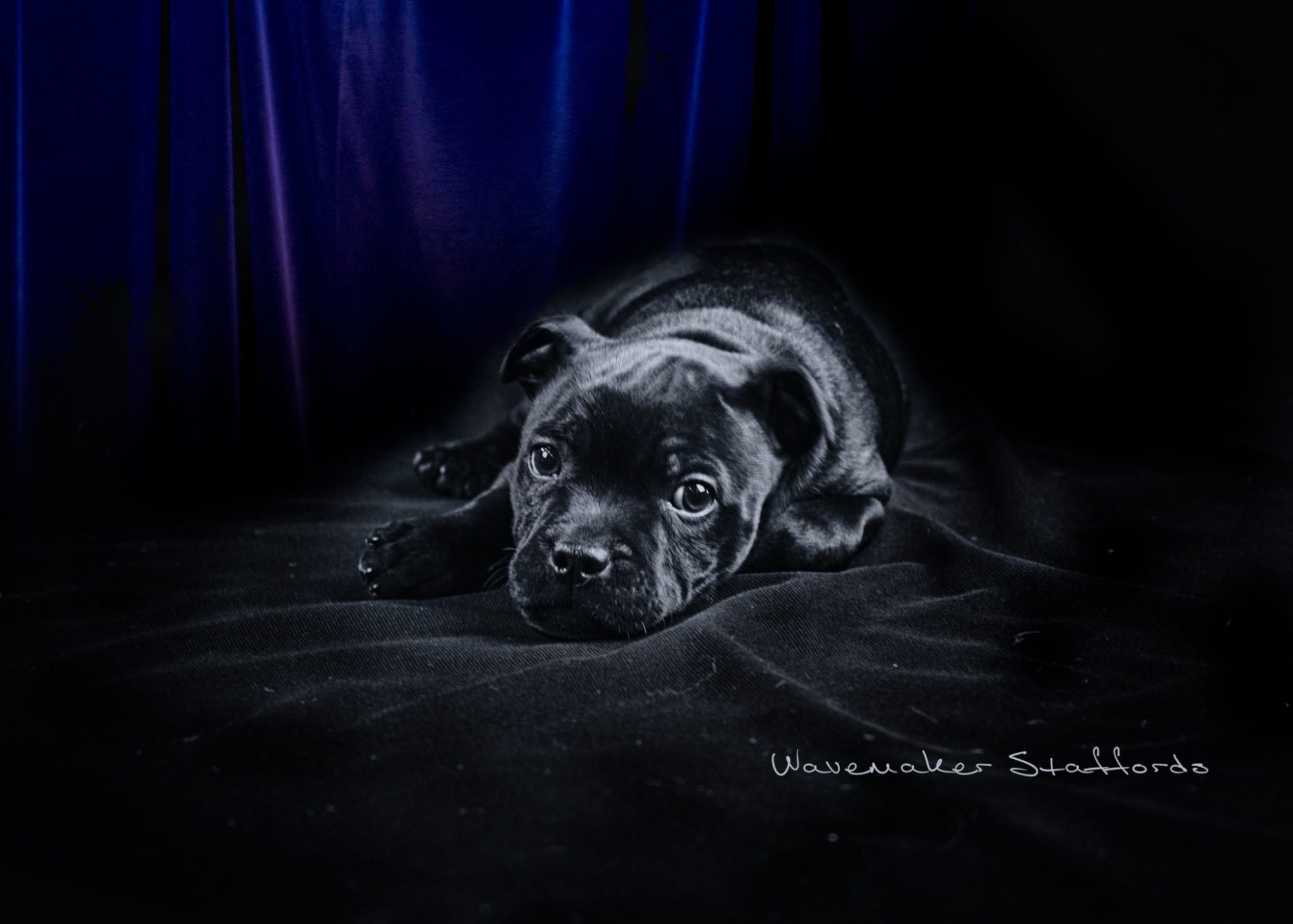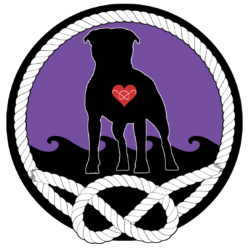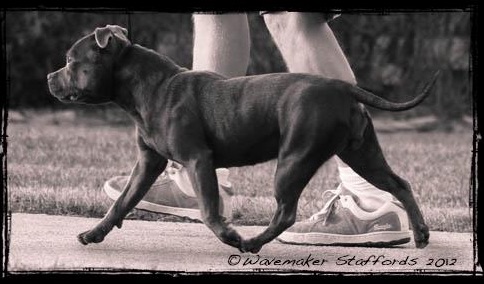The Stafford moves differently than the other Terrier breeds. To most all-rounder judges, the Stafford movement is quite misunderstood so oftentimes they tend to go with what is comfortable in the ring – whether that means bypass the Stafford due to lack of understanding it – or choosing a Stafford whose movement is more typical of a pretty show dog.
Stafford gait wouldn’t be described as ‘pretty’ movement. They don’t ‘flow around the ring as if on air’ nor does the Stafford ‘hackney’ , ‘paddle’ or ‘trot’. The original Standard did not mention movement and still today is is very misunderstood. We read one description in a book that compared Stafford movement to that of ‘a drunken sailor’. While we don’t think it’s that quirky, it does at times seem a bit odd.
Legs moving parallel from front and rear – the dog shouldn’t be tripping all over itself or crossing over. Nor should it appear ‘piston-like’ from the rear. No hackneyed front movement. The front and rear should be moving parallel to one another.
Now to us, parallel does not mean perpendicular to the earth, but lined up with one another when seen front to back and vice versa. The breed standard does not address convergence which changes depending upon the speed of the dogs gait. Some people interpret convergence/perpendicular movement as parallel. We don’t.
In order to move well, there must be balance. Picture the dog in motion and imagine how movement might be affected by a short leg, or a long body, or more weight than the animal should be carrying to be balanced. Staffords should not look hindered in movement at all. They should move easily, with purpose and confidence. There should not be a rolling gait, like in bulldogs. They should not be panting, wheezing and gasping around the show ring. You should see their topline being held level on the move as well as when standing. The head can drop to level when on the move and the tail carriage should be held low – level or slightly higher than level wouldn’t be penalized from us. However, a gay tail is not correct. Nor is a tail tightly tucked between the rear legs.
Staffords should not ‘crawl on their belly’ around the ring, nor appear frightened in its movement at all. They should not crab and if the dog is trained it shouldn’t be straining on its lead to pull the handler around the ring – but if it is doing so because of confidence and exuberance – and not out of fear or aggression – give it a chance to move again and see if you can detect correct movement.
Just a nice easy flow which is rear driven – looks to be ‘pushed’ from the rear with power, yet remaining parallel. Again – moving with purpose and ease. No struggling, no gasping for air, no rolling, crabbing or kicking.


